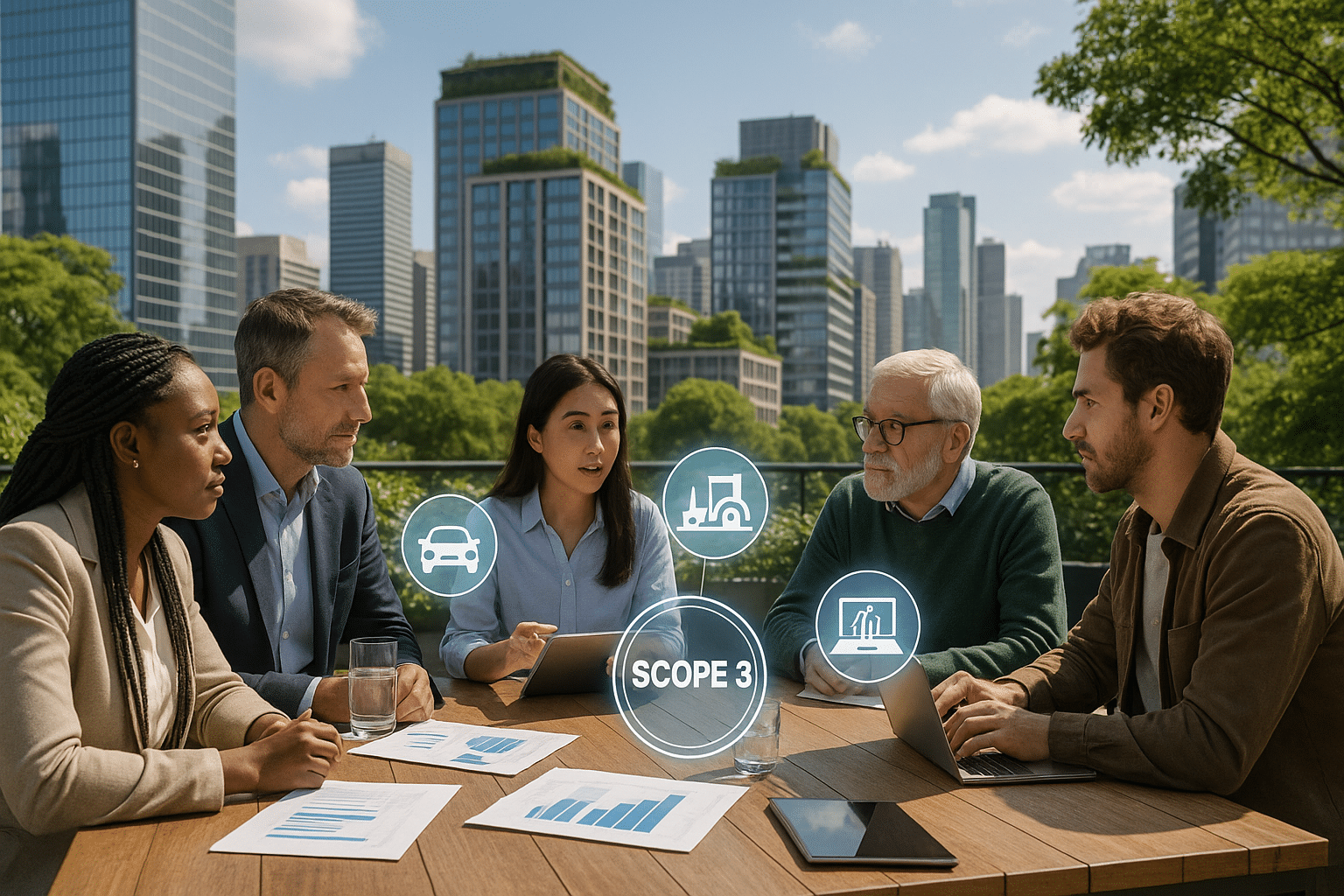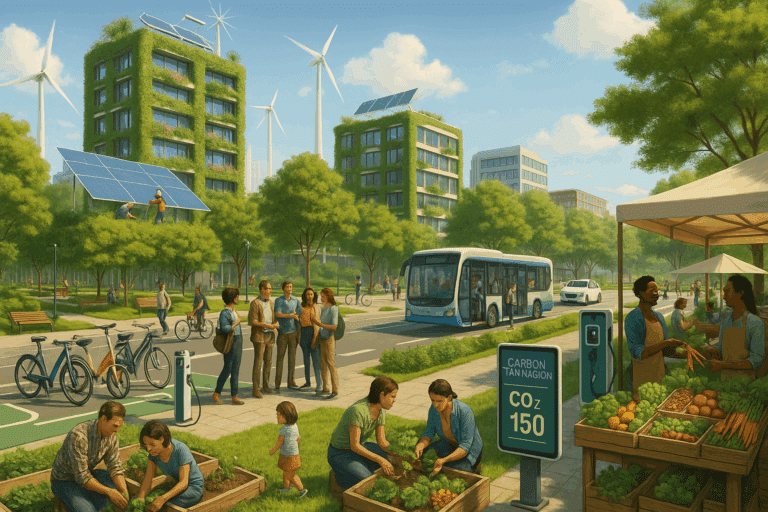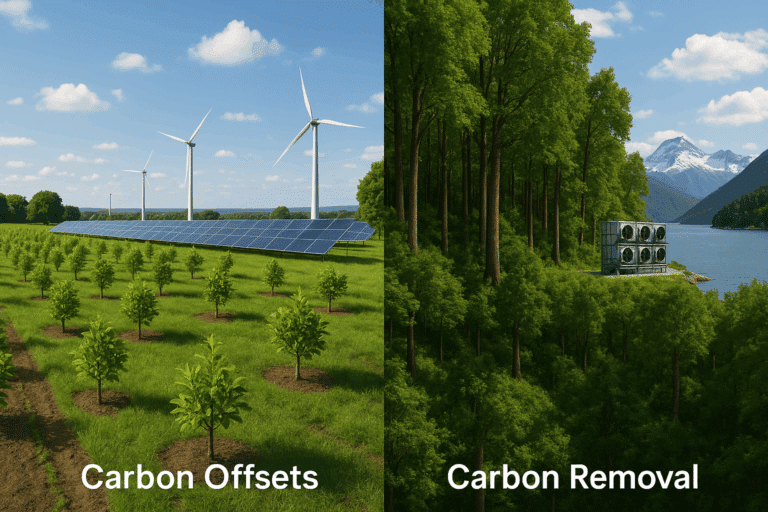In an era increasingly defined by sustainability and corporate responsibility, one of the most pivotal and complex challenges lies in the management of Scope 3 emissions. 😧 But, what exactly are these emissions and why are they so critical? In this comprehensive article, we will illuminate the intricate labyrinth of Scope 3 emissions, helping you navigate through its hidden impacts and exploring strategies for a more sustainable future.
The concept of Greenhouse Gas emissions is no stranger to most of us. We often associate them with the direct emissions from the sources that are owned or controlled by a particular entity, such as those resulting from manufacturing processes or vehicle operations – known as Scope 1 emissions. 🏭 However, there’s more to the emissions story than what meets the eye.
The hidden elephant in the room is Scope 3 emissions, which are often underemphasized, yet their impact is massive and pervasive. These indirect emissions occur in an organization’s value chain, including both upstream and downstream activities – from the extraction and production of purchased materials to the end use of sold products. 😰 The complexity and scale of Scope 3 emissions make them both a significant challenge and an untapped opportunity.
In this in-depth exploration, we will delve into the world of Scope 3 emissions, examining its nuances, challenges, and the imperative of addressing it. We will shed light on the intricacies of measuring, managing, and reducing these emissions, providing actionable insights to drive effective sustainability strategies. 🌍💪
Unpacking the Scope 3 Challenge
The journey begins with a comprehensive understanding of the Scope 3 challenge. Unpacking this concept, we will explore the different categories of Scope 3 emissions, and why they are often overlooked in greenhouse gas accounting. We will also discuss the potential risks and opportunities associated with these emissions, and how they influence corporate sustainability goals.
Navigating the Measuring Maze
Measuring Scope 3 emissions is akin to navigating a complex maze. The task is intricate due to the diversity of sources, geographical spread, and variability of emission factors. 😓 However, it’s an indispensable part of managing these emissions. We will guide you through this measurement maze, discussing the key principles, methodologies, and tools that can aid in accurate and consistent quantification.
Strategies for Reduction and Management
Once we’ve measured these elusive emissions, how can we manage and reduce them? This section will dive deep into the various strategies for effective management and reduction of Scope 3 emissions, including supply chain optimization, stakeholder engagement, and product lifecycle management. 😌 It’s about turning challenge into opportunity for a more sustainable and resilient future.
Through this journey, we hope to equip you with the knowledge and insights to effectively navigate the Scope 3 emissions challenge. While the journey is complex and fraught with challenges, the rewards are immense. By addressing Scope 3 emissions, organizations not only contribute significantly to global sustainability goals, but also build resilience, improve stakeholder relationships, and secure a competitive edge in the green economy. 🌳🌎
So, buckle up, and join us in this exciting exploration into the world of Scope 3 emissions. 💼 Let’s drive the change for a sustainable future together!
Understanding Scope 3 Emissions: A Hidden Challenge
When considering emissions, Scope 3 is often overlooked in favor of its more well-known counterparts, Scope 1 and Scope 2. These latter two refer to direct emissions from owned or controlled sources, and indirect emissions from the generation of purchased energy, respectively. However, Scope 3 emissions – those resulting from the entire value chain of a company’s activities, both upstream and downstream – often make up the lion’s share of an organization’s carbon footprint. In this article, we will delve deep into this little-known world of emissions, attempting to shed light on their implications, as well as the ways to manage and reduce them.
In recent years, Scope 3 emissions have come under the microscope, as businesses and organizations become more aware of the full impact of their operations on the environment. They encompass a wide range of activities such as business travel, commuting, purchased goods and services, waste disposal, and more. Due to their extensive nature, it can be a challenge to accurately track and manage these emissions. However, it’s a challenge that must be met head-on, as they often represent a significant portion of an organization’s overall greenhouse gas emissions.
The path to understanding and managing Scope 3 emissions begins with a clear understanding of the various categories and their sources. Armed with this knowledge, businesses can begin to analyze their own activities, identify areas of improvement, and implement strategies for reduction. In the following sections, we’ll explore the different categories of Scope 3 emissions, and provide insights into how to tackle them for a more sustainable future.
The Categories of Scope 3 Emissions: A Deeper Dive
Scope 3 emissions are broken down into 15 distinct categories by the Greenhouse Gas Protocol, the most widely used international accounting tool for government and business leaders to understand, quantify, and manage greenhouse gas emissions. These categories provide a comprehensive overview of potential emission sources within a company’s value chain, allowing for a more accurate assessment and management.
Here is a snapshot of these categories, presented in a simple comparative table:
| Category | Description |
|---|---|
| Purchased goods and services | Emissions from the production of goods and services purchased by the reporting company. |
| Capital goods | Emissions from the production of capital goods purchased by the reporting company. |
| Fuel and energy-related activities | Emissions related to the production of fuels and energy purchased by the company that are not included in scope 2. |
| Upstream transportation and distribution | Emissions from the transportation and distribution of goods and services in vehicles not owned or controlled by the reporting company. |
| Waste generated in operations | Emissions from waste generated in the reporting company’s operations. |
For a more detailed breakdown of these categories, I recommend the video “Understanding Scope 3 Emissions” by the Carbon Trust on YouTube. It provides an in-depth look into each category and offers insights into how they can be measured and reduced. This video will be invaluable in your journey to understanding Scope 3 emissions.
Addressing Scope 3 Emissions: Steps Towards a Sustainable Future
Addressing Scope 3 emissions is a complex task, but it’s one that businesses must undertake as part of their corporate responsibility and commitment to sustainability. The first step is to conduct a robust and comprehensive carbon footprint analysis, which includes all three scopes. With a clear picture of where emissions are coming from, companies can then prioritize areas for reduction.
One effective strategy for reducing Scope 3 emissions is to engage with suppliers to implement more sustainable practices. This can involve encouraging suppliers to reduce their own Scope 1 and 2 emissions, or to switch to more sustainable materials and processes. Companies can also look at their product design and delivery methods, exploring options for reducing emissions through more efficient designs and lower-carbon transportation.
Finally, communication is key. Transparency about a company’s emissions and their efforts to reduce them can lead to greater accountability and encourage other businesses to follow suit. After all, we’re all in this together. The challenge of Scope 3 emissions is not one that can be solved by a single company alone, but rather, it requires a concerted effort from all sectors of the economy. With commitment, collaboration, and transparency, we can navigate the challenge of Scope 3 emissions and steer our way towards a more sustainable future.

Conclusion
In wrapping up this comprehensive and enlightening discourse on the field of software engineering and Information Technology, it’s critical to reiterate and succinctly summarize the main points we’ve dissected. The importance of these technological aspects cannot be overstated as they are the backbone of our modern world. Understanding them, therefore, is not just a necessity for specialists in the field but also for everyone keen on leveraging technology to solve problems and improve lives.
To start, we delved into the essence of software engineering, defining it as the branch of computer science that focuses on the design, development, and maintenance of software systems. We clarified that software engineering is a dynamic field that continually evolves to keep up with technological advancements and societal needs.
We then discussed the various sub-disciplines within software engineering, including software development, software testing, software maintenance, and software configuration management, emphasizing their distinct roles and interconnectedness. As we explained, each plays a critical role in the software engineering lifecycle, ensuring the creation of reliable, effective, and secure software systems.
A significant part of our discourse focused on the contemporary trends in software engineering and IT such as Agile methodologies, DevOps, Artificial Intelligence, and Blockchain technology. We underscored how these trends are revolutionizing software development, offering increased efficiency, flexibility, and security.
Moreover, we touched on the ethical and legal issues in software engineering and IT, underscoring the need for practitioners to adhere to ethical standards and comply with legal requirements to maintain the integrity of the profession and safeguard users’ interests.
In light of the detailed information shared, it’s evident that the field of software engineering and IT is wide-ranging, complex, and incredibly impactful. Thus, the more we understand and appreciate these intricacies, the better we can leverage technology to drive innovation, solve problems, and improve lives.
We encourage you to continue exploring these topics, either by deepening your understanding through further study or by applying the knowledge gained in practical contexts. Feel free to share your thoughts, experiences, and questions in the comments section below. Your feedback is invaluable in enhancing our content and fostering a vibrant, knowledgeable community.
Remember, sharing is caring! So, don’t hesitate to share this article with friends, colleagues, and anyone else who might find it beneficial. Who knows? You might just ignite a passion for software engineering and IT in someone’s life. 😊
For further reading and research, check out these resources:
1. [IEEE Computer Society](https://www.computer.org/) – For the latest news, research, and trends in Computer Science and Engineering.
2. [ACM Digital Library](https://dl.acm.org/) – A comprehensive collection of ACM publications online, including a vast number of articles on Software Engineering and IT.
3. [Google Scholar](https://scholar.google.com/) – For a wide range of academic literature across various disciplines, including Software Engineering and IT.
Happy learning, and here’s to unlocking the limitless potentials of software engineering and IT in our world! 🌐
Sources:
– [Software Engineering: A Practitioner’s Approach by Roger S. Pressman](https://www.amazon.com/Software-Engineering-Practitioners-Roger-Pressman/dp/0078022126)
– [The ACM Code of Ethics and Professional Conduct](https://www.acm.org/code-of-ethics)
This article is a comprehensive guide to software engineering and IT, providing an overview of the key topics and trends in the field. It is aimed at professionals and enthusiasts who want to deepen their understanding of these critical areas of technology.
[← Back to Home](https://www.rodigoalmeida.com/)



